Do you have a question about the Sharp AQUOS LC-42D64U and is the answer not in the manual?
Covers essential instructions for safe installation, operation, cleaning, and servicing.
Covers safe handling of water, stand, location, ventilation, heat, transport, lightning, and power lines.
Details on antenna grounding, fire hazards, AC cord placement, and safe cleaning procedures.
Detailed steps for assembling and attaching the TV stand to the base.
Guides for unpacking, ventilation, cleaning, connecting power, and initial TV setup.
Instructions for replacing remote control batteries and basic operation checks.
Diagram and labels for the front view of the TV, including indicators and sensors.
Diagram and labels for all input/output terminals and control buttons on the TV.
Instructions on how to point and operate the remote control for optimal performance.
Important warnings about handling the remote control unit to prevent damage or malfunction.
Explanation of antenna types and how to connect them to the TV for a clear picture.
Illustrations and instructions for connecting various antenna cable types to the TV.
Guides for connecting various video sources like Blu-ray players, DVD players, and set-top boxes.
Instructions for connecting devices using composite or component video and audio cables.
How to connect VCRs, game consoles, and camcorders using S-Video or composite cables.
Guide for connecting external audio devices via the digital audio output terminal.
Instructions for connecting HDMI devices and PCs to the TV.
Steps for connecting HDMI devices and using AQUOS 1080p display capability.
How to connect a PC using analog RGB or HDMI terminals for display.
Table listing supported PC resolutions, frequencies, and VESA standards for optimal display.
Procedure for powering on the TV and understanding the power indicator status.
Procedure for turning off the TV and important notes on standby power consumption.
Step-by-step guide for initial TV setup, including language, antenna, and channel search.
Automatic search for viewable channels based on antenna connection type (Air or Cable).
Detailed methods for changing channels using CH/V, FLASHBACK, and direct number input.
How to adjust volume using VOL+/-, mute the sound, and use the SURROUND effect.
Options for selecting stereo modes (MTS/SAP) and digital broadcast audio modes.
How to adjust TV sound reception for stereo, mono, and SAP broadcasts.
Adjusting audio modes for digital broadcasts, including SURROUND, MONO, and STEREO.
Explains how to use menu buttons and understand on-screen display elements.
Lists available menu items categorized by input source (TV/INPUTs and HDMI/PC).
Procedures for initial setup, language selection, and manual channel scanning.
Setting channel memory, skipping channels, and optimizing digital antenna reception.
How to program, select, and delete favorite channels for quick access.
Basic controls for adjusting Backlight, Contrast, Brightness, Color, Tint, and Sharpness.
Detailed settings for optimizing image quality, including CMS, Color Temp, Fine Motion, I/P Setting.
How to adjust Treble, Bass, Balance, Surround, and Bass Enhancer settings.
How to select external input sources and manage input signal types.
Procedure to select and view images from connected external devices.
How to change input signal types for external equipment connected to INPUT 1 or 3.
Steps to select and view images from HDMI-connected devices.
Allows skipping HDMI or PC-IN inputs during input selection operation.
Automatically adjusts PC image position, clock, and phase for optimal display.
Manual adjustment of image position, clock, and phase for precise picture optimization.
Adjusting the horizontal and vertical position of the displayed image.
Procedure to restore all adjusted settings to their original factory preset values.
Option to select the menu language from English, French, or Spanish.
Adjusting screen size and aspect ratio for conventional 4:3 programs.
Selecting screen modes like Stretch, Dot by Dot, Full Screen, and S.Stretch for HD content.
Selecting screen size (Normal, Zoom, Stretch, Dot by Dot) for PC input signals.
Accessing and setting options like Audio Only, Digital Noise Reduction, Program Title Display.
Settings for audio output, color system, game time display, and operation lock out.
Selecting viewing options (Standard, Movie, Game, PC, etc.) to match environment or content.
Manually registering input signal resolutions for proper display of analog PC inputs.
Enabling and adjusting closed caption display for conversations, narration, and text.
Customizing caption screen appearance, including font style, size, color, and opacity.
Viewing digital closed caption information for the current program, including language codes.
Setting a secret number to protect specific TV settings from unauthorized changes.
Enabling or disabling the parental control function using the V-Chip and secret number.
Procedure to change the current secret number for parental control.
How to reset the secret number to its default state.
Setting V-CHIP levels for blocking inappropriate broadcast content based on ratings.
Explanation of MPAA movie ratings used for content filtering.
Explanation of US TV rating systems for content filtering.
Setting MPAA movie ratings to block content based on age-appropriateness.
Setting TV rating guidelines to block content based on age and content type.
Information on Canadian English and French rating systems for content filtering.
Explanation of Canadian English rating categories and their descriptions.
Explanation of Canadian French rating categories and their descriptions.
Optimizing settings for digital broadcasting, including audio output and identification.
Selecting compatible audio output formats (PCM or Dolby Digital) for digital broadcasts.
Checking TV software version and performing software updates via USB.
Steps to update TV software using a USB memory device with the update file.
Details on the software update process, including data checking and completion confirmation.
Capturing and holding a moving image on the screen to view details.
Programming the remote control to operate connected AV devices like VCRs and cable boxes.
Entering manufacturer codes to enable remote control operation for various AV devices.
Lists of manufacturer codes for VCR, DVD/LD, CATV/SAT, and Audio brands.
Operating connected cable converter boxes using the TV remote control.
Operating connected satellite receiver boxes using the TV remote control.
Using the remote control buttons to operate connected VCR functions.
Using the remote control buttons to operate connected DVD player functions.
Using AQUOS LINK to interactively operate HDMI-connected devices like Blu-ray players and AV amplifiers.
Explanation of the HDMI CEC protocol for interactive device control.
Diagram showing connection of BD player and audio system using AQUOS LINK.
Enables One Touch Play function, automatically turning on TV and playing HDMI source.
Setting the specific recorder for recording when using the TV's remote control.
Switching between HDD or DVD media for playback or recording on CEC recorders.
Easy one-touch recording of viewed programs to AQUOS LINK-compatible equipment.
Accessing recorder's EPG and presetting timer recordings using the TV remote.
Controlling playback and managing HDMI devices using AQUOS LINK features.
Selecting TV sound output and changing sound modes for the AQUOS AUDIO system.
Instructions for safely detaching or attaching the TV stand, with cautionary notes.
Guidelines and cautions for wall-mounting the TV using a SHARP wall mount bracket.
Provides solutions for common problems like no power, remote issues, picture, and sound problems.
Addresses error messages related to broadcast reception and suggests possible solutions.
Details on PC control via RS-232C, including communication conditions and command formats.
Explains the format of response codes received from the TV during PC control.
Table listing control items, commands, parameters, and control contents for PC operation.
Technical details of the TV, including LCD panel, dimensions, power, and connectivity options.
Information on available optional accessories, such as wall mount brackets.
Procedure to clear the secret number if it is forgotten, using TV buttons.
Details on software composition, development, and open source license agreements.
Lists warranty periods for various Sharp products, including audio, VCR, DVD, and LCD TVs.
Details about product purchase date, location, and service plan.
Information on where the TV is used, installed, and learned about.
Details on household income, education, occupation, interests, and credit card usage.
Information on pets, phone usage, internet service, languages, and customer activities.
Customer selection of their three most important activities from the provided list.
Covers essential instructions for safe installation, operation, cleaning, and servicing.
Covers safe handling of water, stand, location, ventilation, heat, transport, lightning, and power lines.
Details on antenna grounding, fire hazards, AC cord placement, and safe cleaning procedures.
Detailed steps for assembling and attaching the TV stand to the base.
Guides for unpacking, ventilation, cleaning, connecting power, and initial TV setup.
Instructions for replacing remote control batteries and basic operation checks.
Diagram and labels for the front view of the TV, including indicators and sensors.
Diagram and labels for all input/output terminals and control buttons on the TV.
Instructions on how to point and operate the remote control for optimal performance.
Important warnings about handling the remote control unit to prevent damage or malfunction.
Explanation of antenna types and how to connect them to the TV for a clear picture.
Illustrations and instructions for connecting various antenna cable types to the TV.
Guides for connecting various video sources like Blu-ray players, DVD players, and set-top boxes.
Instructions for connecting devices using composite or component video and audio cables.
How to connect VCRs, game consoles, and camcorders using S-Video or composite cables.
Guide for connecting external audio devices via the digital audio output terminal.
Instructions for connecting HDMI devices and PCs to the TV.
Steps for connecting HDMI devices and using AQUOS 1080p display capability.
How to connect a PC using analog RGB or HDMI terminals for display.
Table listing supported PC resolutions, frequencies, and VESA standards for optimal display.
Procedure for powering on the TV and understanding the power indicator status.
Procedure for turning off the TV and important notes on standby power consumption.
Step-by-step guide for initial TV setup, including language, antenna, and channel search.
Automatic search for viewable channels based on antenna connection type (Air or Cable).
Detailed methods for changing channels using CH/V, FLASHBACK, and direct number input.
How to adjust volume using VOL+/-, mute the sound, and use the SURROUND effect.
Options for selecting stereo modes (MTS/SAP) and digital broadcast audio modes.
How to adjust TV sound reception for stereo, mono, and SAP broadcasts.
Adjusting audio modes for digital broadcasts, including SURROUND, MONO, and STEREO.
Explains how to use menu buttons and understand on-screen display elements.
Lists available menu items categorized by input source (TV/INPUTs and HDMI/PC).
Procedures for initial setup, language selection, and manual channel scanning.
Setting channel memory, skipping channels, and optimizing digital antenna reception.
How to program, select, and delete favorite channels for quick access.
Basic controls for adjusting Backlight, Contrast, Brightness, Color, Tint, and Sharpness.
Detailed settings for optimizing image quality, including CMS, Color Temp, Fine Motion, I/P Setting.
How to adjust Treble, Bass, Balance, Surround, and Bass Enhancer settings.
How to select external input sources and manage input signal types.
Procedure to select and view images from connected external devices.
How to change input signal types for external equipment connected to INPUT 1 or 3.
Steps to select and view images from HDMI-connected devices.
Allows skipping HDMI or PC-IN inputs during input selection operation.
Automatically adjusts PC image position, clock, and phase for optimal display.
Manual adjustment of image position, clock, and phase for precise picture optimization.
Adjusting the horizontal and vertical position of the displayed image.
Procedure to restore all adjusted settings to their original factory preset values.
Option to select the menu language from English, French, or Spanish.
Adjusting screen size and aspect ratio for conventional 4:3 programs.
Selecting screen modes like Stretch, Dot by Dot, Full Screen, and S.Stretch for HD content.
Selecting screen size (Normal, Zoom, Stretch, Dot by Dot) for PC input signals.
Accessing and setting options like Audio Only, Digital Noise Reduction, Program Title Display.
Settings for audio output, color system, game time display, and operation lock out.
Selecting viewing options (Standard, Movie, Game, PC, etc.) to match environment or content.
Manually registering input signal resolutions for proper display of analog PC inputs.
Enabling and adjusting closed caption display for conversations, narration, and text.
Customizing caption screen appearance, including font style, size, color, and opacity.
Viewing digital closed caption information for the current program, including language codes.
Setting a secret number to protect specific TV settings from unauthorized changes.
Enabling or disabling the parental control function using the V-Chip and secret number.
Procedure to change the current secret number for parental control.
How to reset the secret number to its default state.
Setting V-CHIP levels for blocking inappropriate broadcast content based on ratings.
Explanation of MPAA movie ratings used for content filtering.
Explanation of US TV rating systems for content filtering.
Setting MPAA movie ratings to block content based on age-appropriateness.
Setting TV rating guidelines to block content based on age and content type.
Information on Canadian English and French rating systems for content filtering.
Explanation of Canadian English rating categories and their descriptions.
Explanation of Canadian French rating categories and their descriptions.
Optimizing settings for digital broadcasting, including audio output and identification.
Selecting compatible audio output formats (PCM or Dolby Digital) for digital broadcasts.
Checking TV software version and performing software updates via USB.
Steps to update TV software using a USB memory device with the update file.
Details on the software update process, including data checking and completion confirmation.
Capturing and holding a moving image on the screen to view details.
Programming the remote control to operate connected AV devices like VCRs and cable boxes.
Entering manufacturer codes to enable remote control operation for various AV devices.
Lists of manufacturer codes for VCR, DVD/LD, CATV/SAT, and Audio brands.
Operating connected cable converter boxes using the TV remote control.
Operating connected satellite receiver boxes using the TV remote control.
Using the remote control buttons to operate connected VCR functions.
Using the remote control buttons to operate connected DVD player functions.
Using AQUOS LINK to interactively operate HDMI-connected devices like Blu-ray players and AV amplifiers.
Explanation of the HDMI CEC protocol for interactive device control.
Diagram showing connection of BD player and audio system using AQUOS LINK.
Enables One Touch Play function, automatically turning on TV and playing HDMI source.
Setting the specific recorder for recording when using the TV's remote control.
Switching between HDD or DVD media for playback or recording on CEC recorders.
Easy one-touch recording of viewed programs to AQUOS LINK-compatible equipment.
Accessing recorder's EPG and presetting timer recordings using the TV remote.
Controlling playback and managing HDMI devices using AQUOS LINK features.
Selecting TV sound output and changing sound modes for the AQUOS AUDIO system.
Instructions for safely detaching or attaching the TV stand, with cautionary notes.
Guidelines and cautions for wall-mounting the TV using a SHARP wall mount bracket.
Provides solutions for common problems like no power, remote issues, picture, and sound problems.
Addresses error messages related to broadcast reception and suggests possible solutions.
Details on PC control via RS-232C, including communication conditions and command formats.
Explains the format of response codes received from the TV during PC control.
Table listing control items, commands, parameters, and control contents for PC operation.
Technical details of the TV, including LCD panel, dimensions, power, and connectivity options.
Information on available optional accessories, such as wall mount brackets.
Procedure to clear the secret number if it is forgotten, using TV buttons.
Details on software composition, development, and open source license agreements.
Lists warranty periods for various Sharp products, including audio, VCR, DVD, and LCD TVs.
Details about product purchase date, location, and service plan.
Information on where the TV is used, installed, and learned about.
Details on household income, education, occupation, interests, and credit card usage.
Information on pets, phone usage, internet service, languages, and customer activities.
Customer selection of their three most important activities from the provided list.
| Screen Size | 42 inches |
|---|---|
| Display Type | LCD |
| Backlight Type | CCFL |
| Brightness | 450 cd/m² |
| Response Time | 6 ms |
| HDMI Inputs | 2 |
| Component Video Inputs | 1 |
| Composite Video Inputs | 1 |
| Audio Output | 10 W x 2 |
| Aspect Ratio | 16:9 |
| Resolution | 1920 x 1080 |
| Viewing Angle | 176° (Horizontal/Vertical) |
| Inputs | HDMI, Component, Composite |
| Speakers | Built-in stereo speakers (10W x 2) |
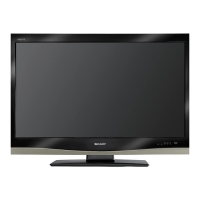
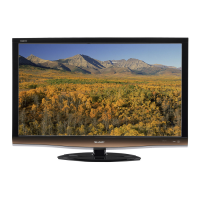
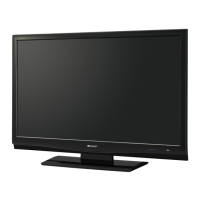
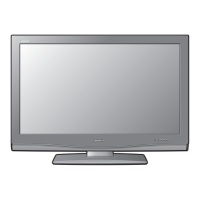
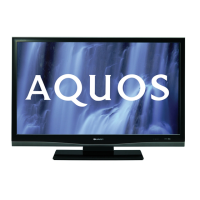
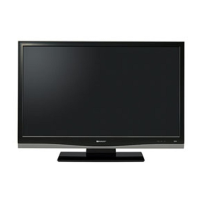
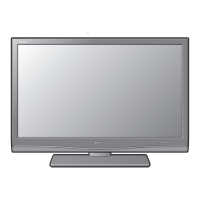
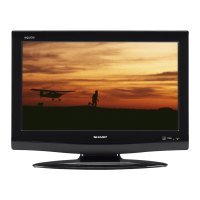
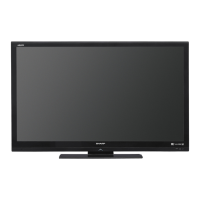
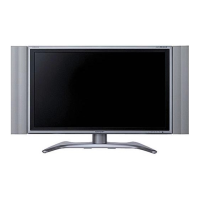
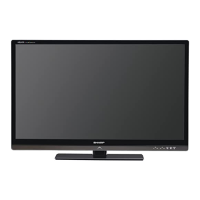
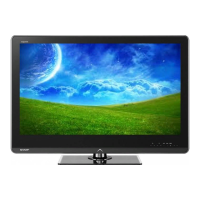
